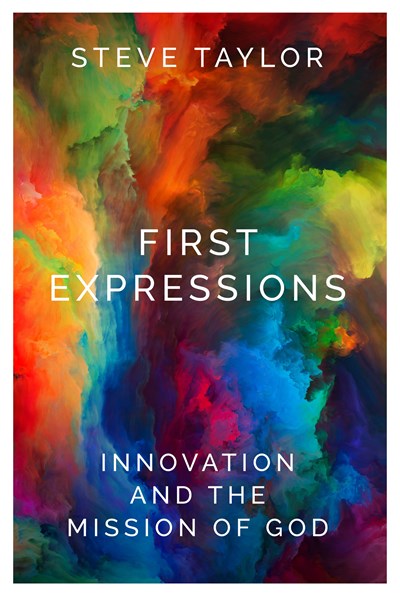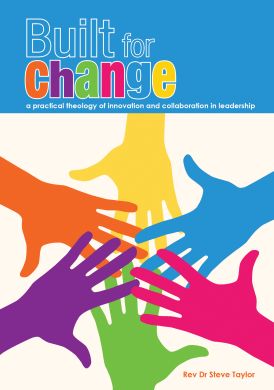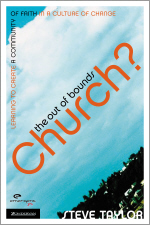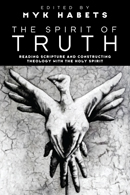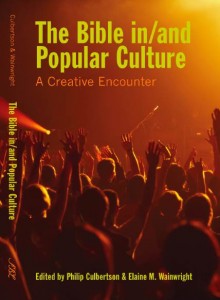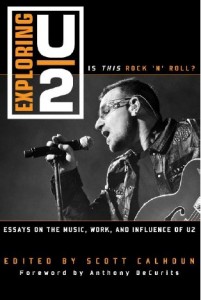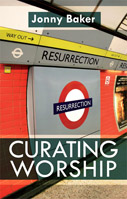Tuesday, June 09, 2020
Is that your Bible?
An opinion piece I wrote – Is that your Bible? – has been accepted by ABC Religion and Ethics and is up on their online portal. It’s an analysis of a moment in popular culture and some reflection on what it means to use and abuse religious symbols. It’s always been a bucket list to pitch an idea to a national news organisation and try to connect theology with current events.
So I looked at other pieces on the portal to get an idea of word length (scope). Then I did a quick google to find out what else had been written (unique) and pitched the concept on Wednesday, using a short acronym from Sam Dylan Fitch (here)
P – Purpose. What’s the point of your piece?
A – Audience. Who are you talking to?
U – Unique. What’s new about your take?
S – Scope. Is it “too big” or just right?
E – Editor. Did you spell their name correctly and review their guidelines/pub? Does your pitch reflect that?
and with 4 edits over the next 4 days, had it published on Monday.
Tuesday, May 26, 2020
Fire and Rain on Just and Unjust Alike: Zadok autumn 2020 column
I am a columnist for Zadok, an Australian publication focused on Christian engagement with Australian society. The latest issue (Autumn 2020) is on climate change and is packed with articles on plastic, zero-waste lifestyles and theological themes of creation and hope. I provide a short (860 words) reflection on the use of “hell on earth” to describe bushfires. It is a fascinating phrase to use in societies claiming to be secular and somehow becomes a detour through apocalyptic language to the Sermon on the Mount and the church as nurturing the art of conversation across polarised communities and that fascinating line from U2:
Choose your enemies carefully, ’cause they will define you/
Make them interesting, because in some ways they will mind you/
(from Cedars of Lebanon, in U2’s No Line On The Horizonalbum)
You can order the magazine here.
Monday, May 25, 2020
KCML Bubble courses: Lockdown special? Or the sign of a #newnormal?
A short piece I wrote for the Knox Centre for Ministry and leadership website, also cross posting it here.
‘Stick to your bubble’, the Prime Minister announced on Tuesday 24 March. In response to the first cases of community transmission of COVID-19 in Aotearoa, New Zealand was entering bubble time.
Bubbles can be beautiful, sparkling red, green and blue as sunlight touches their fragile surface. Equally, bubbles can be delicate, a thin film so easily broken.
Entering our bubbles, Aoteroa was forced into new ways of living, working and playing. Worshipping on lounge room sofas, running businesses from a kitchen table, learning from our laptop soon became the new normal.Wanting to resource the Presbyterian church during the lockdown, KCML offering “Bubble courses.” KCML Faculty with expertise in preaching, leadership and Christian formation went online during Level 3 to offer sixty minutes of evening input. How to preach in a pandemic? How to lead in change? How to build a community online?
For six evenings, ministers, session clerks, paid and voluntary church leaders, found themselves learning together online. New connections were made across diverse Presbyteries as lay and ordained were sent to online break rooms to share experiences.
Every Bubble course attracted between 30 to 45 participants. Sessions were recorded, and those unable to attend can access these through the KCML Living library.
While advertised to Presbyterians, the wonder of social media meant that participants were logging in from England and Australia, keen to learn from the calibre of Faculty at KCML.
“Thank you for allowing me to participate from ‘across the ditch’. This has been truly helpful already. The high-quality input and interactive nature are making it accessible and interesting.”
Each session was co-hosted, with social media strategist Tash McGill coming on board to welcome participants, provide technical support and enhance the conversation. Co-hosting was a way of modelling to churches ways to build online participation. Tash commented ”
As a specialist in digital transformation and online community, this was a venture into hope casting. The participation, active reflection and safety created demonstrated ways to build very present and real learning experiences in digital ways.”
This was new terrain for KCML Faculty. For Geoff New “What struck me was the deep level of trust and transparency. Participants engaged immediately, opening up to people they did not know. A college of preachers was created. Wonderful!”
For Steve Taylor, “It was wonderful to scan faces as people returned from online breakout small groups and see the range of people. Overseas ministers, Presbytery and local church leaders, LOM and NOM ministers were all learning and sharing together.”
The feedback from participants has been heartwarming. Words and phrases like “goldmine”, “excellent”, “stimulating” and phrases like “impressively well run”, “great service to the church”, “beautiful and interestingly presented” were used.
Is Bubble learning limited to a lockdown? Could online learning that is timely, thought provoking, conversational, engaging be part of a #newnormal for the Presbyterian church? The feedback certainly included requests for a sequel. One participant wrote
“I hope they can continue in some form – I think we need these to extend our “local church bubbles” to connect, interact and grow.”
KCML is seeking further feedback and working to discern future directions with the Leadership Subcommittee.
Steve Taylor
20 May 2020
Saturday, April 25, 2020
communities of practice as action-reflection tools
It’s been an extraordinarily generative week for me.
- First, I found myself offering a closed facebook group to bring practitioners of innovation in digital worlds into contact with research. That has generated 38 members and over 200 comments as people interacted with research on faith formation.
- Second, I hosted an online video conversation in which 25 folk from 4 countries engaged further around their experiences of innovation in digital worlds.
- Third, I’m potentially offering a community of practice, in which folk wanting to experiment can meet with peers for support and reflection. This is still forming and might not yet materialise – life is so fluid for so many people. However, it is astonishing to realise this wasn’t even on my radar 7 days ago.
Companies of friends in the journey of innovation.
There is action, and there needs to be space for reflection. Reflection can be individual, as I write and journal. Reflection can be individual, as I read and engage with the experiences and insights of others, and so see my actions more carefully. Reflection can be communal, as I share my intuitions and half-baked processing and gain wisdom simply from those who give the gift of listening; even active-listening, which draws me into free speech. Reflection can be communal, the conversations that result from sharing, the connections that get made.
So I’m offering a Community of Practice for those innovating in digital faith. It is for active people already doing stuff this is a space to reflect, to process with peers. And I have this hope, this pleading, that it won’t be my last. I dream of multiple Communities of Practice, in which unique projects (actions), by those facing a shared challenge, are enhanced by the space to reflect – individually and communally.
Wednesday, March 25, 2020
Annunciation in a time of Isolation
I write from home on lockdown eve. A national state of emergency has been enacted, and at midnight on the 25 March 2020, all of Aotearoa New Zealand has been ordered to isolate for the next four weeks. All over my nation, people are returning home. Parents are becoming teachers. Kitchen tables are now work desks, while fridge doors have new daily routines and economic fear gnaws.
Aotearoa New Zealand is not alone. As I write, more than 1.7 billion people worldwide, over a fifth of the world’s population, are secluding themselves at home.
In the calendar of the church, the 25 March is a Principal Feast. Hence on this 2020 lockdown eve, the lectionary texts revolve around the annunciation of Our Lord to the Blessed Virgin Mary.
In Luke 1:26–38, the angel appears to Mary, announcing good news. God is conceiving life, in the form of Jesus of Nazareth. In the tradition of the church, this announcement of God’s activity is in the context of seclusion.
This is beautifully portrayed in The Annunciation, an artwork by Filippo Lippi (1450s), that hangs in Room 58 of the National Gallery in London. Mary is (humanly) alone. She is seated inside a house, isolated from the outdoors by a stone wall. Behind her is stone stairs, suggesting further layers of enclosure. In front of her is the garden, although even that is enclosed. This is a woman alone and physically separated. Whether this was reality, we do not know. How much of this is patriarchy, with Mary entombed by external prejudices and cultural bias, whether from century villagers or fourteenth century is also unclear.
What is clear is that in this isolation, Mary is surrounded by Divine activity. She stares at an angel, who has slipped over the enclosed garden wall to kneel in respect. Above Mary is the hand of God, a motif present in so much baptismal art. Filippo Lippi presents the hand as breaking through the roof, a foreshadowing of the paralytic who will descend through the roof to be forgiven and healed by Jesus in Mark 2:1–12.
A bird hovers in front of Mary’s womb. The detail is extraordinary. A spray of golden particles issues from the beak of the dove. It is common in Annunciation art for the dove to be located above Mary’s head. Filippo Lippi provides a new intimacy, as the Spirit draws near to the womb the angel is blessing. Annunciation thus offers a theology of isolation.
First, what is clear is that a home is a place of encounter. Much of religious activity is centred on the church. We expect the Spirit to be present Sunday by Sunday as the faithful gather around the body of Christ. In the annunciation, God is present in the home. This is good news for the millions of humans currently in lockdown. As we gaze longingly at our gardens, God’s hand can enter our rooms. As an external virus entombs us, God’s Spirit draws near.
Blessed are the secluded
For they will experience God
Second, the house protects. The womb of Mary will house the son of God. God’s Spirit’s draws near, proclaiming favour on the womb of Mary. This womb will house the son of God. In the flow of blood and the bodily tasks of eating and drinking, Divine life is safeguarded. This is what makes Christianity radical, for in God, bodies matter. This is the genius of Filippo Lippi. Mary’s womb, that human body that will house the divine body, is inside a house. Do the stone walls enclose? Or do they protect?
Blessed is the home
For protecting of divine encounter
Third, in seclusion is new life. The word “conceive” is used twice (verses 31 and 36), as is the word “birth” (verses 31 and 35). So much of Christianity seems focused on death, yet the story of Jesus brims with new life. The Spirit that hovers over Mary is the Spirit that hovers over the waters in Genesis 1:2. It is the Spirit that makes birth again possible for Nicodemus in John 3:4–6. It is the Spirit that groans with creation in the pains of childbirth in Romans 8:22–23. In 2020, this same conceiving Spirit continues to hover over our locked-down bodies. Bonhoeffer wrote that in birth, God in Jesus Christ claims space in the world as a “narrow space” in which the whole reality of the world is revealed (Ethics (Dietrich Bonhoeffer-Reader’s Edition)).
This narrow space that is the hope of a new creation is conceived in the four walls that enclose Mary. In 2020, the narrow spaces that are the four walls of our home might yet be the womb of God’s new creation. Might we emerge into a new world in which a universal basic income protects the vulnerable? Might we cultivate different habits, like sabbath and localism, which change the nature of global pollution?
Blessed is time
For in the moment is grace
Fourth, an agency is established. In Luke 1:26-38, despite being secluded, Mary is no passive passenger. She is an agent, choosing to open herself to God’s mission of favour. As she utters the words “Here I am” (verse 38), she is locating herself in the genealogy of God’s servants. She is taking her place alongside Moses in Exodus 3:4 and the prophet in Isaiah 6:8.
How might Mary’s agency be portrayed in art? What Filippo Lippi does is extraordinary. A close examination of The Annunciation shows a spray of golden particles pours from the beak of the hovering dove. An answering spray of gold golden particles issues from a tiny parting in the tunic of Mary. This is Mary “active and outgoing” according to John Drury, former Dean of Christ Church, Oxford (Painting the Word: Christian Pictures and Their Meanings, Yale University Press, 1999, 53). In enclosure, Mary is open. Secluded, she is receptive. This is the art of imagination, not the precision of science. Yet in the poetry is a theology of isolation.
Blessed are the isolated
For they participate in God’s conceiving
In time, Mary will be no stranger to sorrow. The years that lie ahead of her will be stained by tears and pain. God’s favour is no offer of a rosy garden. Yet on the Feast of Annunciation, we in 2020 find a theology of isolation. Enclosed in our homes, God’s Spirit is active. Entombed by the invisible, we have agency. In the narrow space in which we, as a global society, find ourselves, a new world might yet be conceived.
Rev Dr Steve Taylor is Principal of Knox Centre for Ministry and Leadership and explores ecclesiologies of birth and conception in First Expressions: Innovation and the Mission of God. This post also appears on the SCM blog as part of their #TheologyinIsolation series.
Thursday, February 27, 2020
The burning bush – a visual study of indigenization and faith
Title (working): The burning bush in Aotearoa New Zealand: a visual study of indigenization and faith
Aim: 5-7000 words, including notes; scholarly rigour with clear and lively prose; due to publisher 1 March 2020.
Abstract(working): Presbyterianism is a global faith. Yet a message spoken by a sender is not always what is heard by a receiver. Hence communicating faith across cultures can simultaneously generate both globalization and distinct accounts of indigenization. Messages are communicated not only in words but also in visuals. This paper examines the indigenization of the burning bush in the contexts and cultures of Aotearoa New Zealand. An archival study of crafted adornments to Bibles, stained glass windows and identity symbols suggest that visual communication enhances local agency and empowers indigenization. The bush takes indigenous form, burning because of a Presbyterian theology of immediacy in revelation.
(Trying to turn a cross-cultural experience in 2018, and a keynote talk in 2018
 and another more academic talk in 2019 into a written piece for a special journal issue on the principles of indigenization).
and another more academic talk in 2019 into a written piece for a special journal issue on the principles of indigenization).
Tuesday, February 25, 2020
Faith in the boardroom chapter acceptance
My book chapter for Reimagining Faith & Management got a big tick from the editors today. It is a 7,000-word piece I have been working on for a few months, in the gaps around holidays, two block courses and some other writing on craftivism.
It was a quite out of the blue invitation in August of 2019 to consider being part of this international project. I kept wondering if I had bitten off more than I could chew. But it has been a wonderful opportunity to push forward my research into leadership and innovation in Built for change: A practical theology of innovation and collaboration and institutions and innovation in First Expressions: Innovation and the Mission of God
. In particular to draw on presentations from 3 years of the Lighthouse innovation incubators, along with further research into the Wisdom literature of Hebrew Scripture as a resource.
Chapter title: Faith in the boardroom: Seeking wisdom in governing for innovation
Abstract: This paper explores faith in the context of the boardroom. A notion of wisdom governance is developed in dialogue with Hebrew Scripture and contemporary governance research. The proposal is that faith resources can be utilised in ways accessible to pluralist contexts yet respectful of the particularities of diverse faith traditions. Governance practices are developed using verbs of serving, gardening, building, resourcing, risking and parenting. Two case studies clarify the nature of governance in innovation. The argument is that in conditions that require the balancing of risk and innovation, a wisdom governance that is trusted, engaging and connective is possible.
Keywords: governance, Wisdom literature, innovation, risk
The book – Reimagining Faith and Management: The Impact of Faith in the Workplace– is part of the Routledge Studies in Management, Organizations and Society series. . Dr Edwina Pio is the lead editor. She is New Zealand’s first Professor of Diversity and in 2019, was awarded the Te Rangi Hiroa Medal by the Royal Society Te Apārangi for her pioneering research in diversity, specifically, how the intersection of ethnicity, religion and gender is influenced by the world of work. So it is wonderful to have such a skilled researcher taking the lead in what is an interdisciplinary space that has quite some complexity.
The co-editors are Dr Robert Kilpatrick and Dr Timothy Pratt, whom I’ve kept in contact with since being in Baptist ministry together in the late 1990s and early 2000s. Little did any of us dream back then that we’d be writing in this space together! Each chapter will revolve around managerial concepts within which faith-based aspects will be woven. The twenty chapters will be written by contributors from around the globe, with publication either at the end of 2020 or early 2021.
Wednesday, November 06, 2019
in an indexing space
Last week I was in the editing cave, huddled in a small alcove, confined in order to focus and check the typeset proofs of my forthcoming book.
With the editing task completed, this week I’m in the indexing space. I have physically moved. I have found another building, complete with a square table, providing room to spread pages of notes and publisher guidelines and how to index articles downloaded from the internet. The square table is in a large space, with a high ceiling. In this space, I feel free, yet still confined enough to focus.
I have never indexed before. I considered hiring a professional. But the articles from the internet shared stories of books outsourced to professional indexers who lacked a feel for the subject area. My book works across a number of disciplines – missiology, empirical research and innovation. So I decided I needed to learn.
I began by defining the task. 1 page of index for 45 pages of writing said the guidelines from the publisher. With my book being 235 pages, that meant I needed 5 pages. Suddenly the task had an end.
I then turned to similar books. I looked at their index and that got me started. I identified key words and that helped me brainstormed more. Typing these words up gave me 3.5 pages of index. Suddenly I was under way.
Next I began at the beginning. I am reading through every chapter of my book. In the margins, as I read, I am noting key words. I am trying to think like the reader, identify words they might be interested in. As each chapter ends, I add the words as page numbers in the index. The index is taking shape.
Time (and reviewers) will tell whether my first attempt is good, or a poor; my decision to do it myself wise or misguided. But I am, to my great surprise, really enjoying the task of indexing. Indexing involves short bursts of concentration, rather than the extended work required to edit a chapter. It is like sprints, rather than a marathon. And there are patterns. I see the patterns emerging as words become linked across pages. It is fun trying to think like a reader.
I have much to do. But I am underway. The indexing space is different from the editing cave and the creative writing cafe.
Thursday, October 31, 2019
in the editing cave
I am in the editing cave.
And it is dark.
The copy edits on my first expressions book arrived a few weeks ago.
I took some time to sit with the joy – of seeing the actual size of the book; of holding a complete manuscript of 240 pages, of leafing through and admiring how the multiple tables worked to clarify; of seeing how the haiku I wrote for each chapter work to ensure white space for creativity.
But the copy edits came with a deadline. Please undertake a final read and return any corrections by 4 November.
In order to begin, I needed to break up the task. There are 13 chapters, so over 3 weeks; that means 4 chapters a week; 4 days a week with a day of grace for the unexpected/travel etc.
In order to begin, I needed to find a new spot. Normally I begin each day writing in a cafe. For m, it is a profoundly important time, a time to ideate, to be imaginative with ideas and creative with words. I’m more fully human after an hour of writing.
I have a local cafe with big windows opening onto green space and the distraction of voices talking. In that space I am creative.
But copy edits require not big ideas but focus and careful attention to detail.
The University library has some chairs under the first floor stairwell. This is a confined space, perfectly suited for focus. There is free 2 hour parking close by. That also provides confinement – I only have 2 hours; this concentration has a time limit.
There are no neighbours. This also is important, as I edit by reading aloud. Speaking the words helps me concentrate, be more attentive to what is actually printed, not what my brain thinks should be printed. Under the stairwall, I can talk to myself, hear only myself.
In this cave, I am able to work differently. I miss (terribly) the invitation to be creative and ideate. But in the confines of their stairwall, there is hope. This has limits. This is not forever. This will end.
And in that, there is satisfaction.
Wednesday, October 23, 2019
the journey of a journal article – Cultural hybridity in conversion
“Cultural hybridity in conversion: an examination of “Hapkas” Christology as resistance and innovation in Drusilla Modjeska’s The Mountain,” Mission Studies 36 (3) November 2019, 416-441” (here).
Abstract -This essay analyses Christian witness, applying a post-colonial lens to Drusilla Modjeska’s The Mountain
to account for conversion and transformation in Papua New Guinea. A ‘hapkas’ (half-caste) Christology of indigenous agency, communal transformation and hybridity is examined in dialogue with New Testament themes of genealogy, redemption as gift and Jesus as the new Adam. Jesus as ‘good man true’ is placed in critical dialogue with masculine identity tropes in Melanesian anthropology. Jesus as ancestor gift of Canaanite descent is located in relation to scholarship that respects indigenous cultures as Old Testaments and post-colonial theologies of revelation which affirm cultural hybridity and indigenous innovation in conversion across cultures. This ‘hapkas’ Christology demonstrates how a received message of Christian mission is transformed in a crossing of cultures.
The journey of a journal article – through fiction, art and anthropology via my childhood. ‘Innovative” the editor called it. “Excellent article – well framed, written and a pleasure to read. … one of the best articles I have read in a while … Well done!” said the reviewers.
So a short video to explain the journey and introduce some of the key resources.
Cultural hybridity in conversion by Steve Taylor in Mission Studies from steve taylor on Vimeo.
Drusilla Modjeska, The Mountain.
Drusilla Modjeska, Second Half First.
National Gallery Victoria, Wisdom of the Mountain: Art of the Omie
Stanley Skreslet, Comprehending Mission: The Questions, Methods, Themes, Problems, and prospects of Missiology.
Friday, September 13, 2019
writing goalless in Germany
This week was my last week of sabbatical and at 9 am on Monday, the computer was on and I was writing. I’ve not set myself any writing targets for this week. This is highly unusual. Writing time is so precious and I am normally very focused.
But not this week. For a number of reasons.
First, intuitively, the fact that I am highly focused in writing makes it worth exploring other modes. What would happen if I followed my nose? What might I learn about myself, about writing, about creating?
Second, practically, the major aim of the sabbatical was the completion of a book contract, an empirical study of innovation and mission. The deadline with the publishers was May. When my sabbatical was postponed in February, I absorbed the pressure of needing to meet a deadline with 13 weeks of sabbatical not 15. It meant working a few too many Saturday’s in May. But having met that deadline in May, on the other side in September, I had some weeks spare. It made sense to treat them as a treat. I’d already met the deadline for the 15 weeks, so whatever emerged would be a bonus.
Third, I’ve decided to spend this week writing in Germany. My daughter is cycling the Rhine River and this was a chance for her to pause and for us to spend precious father/daughter time together. We had agreed that I would write in the mornings and we would explore in the afternoons and evenings. This meant that I would be writing in a totally new space. I was not sure what type of desk I would have to work at nor what books and resources I might need. Nor did I want to carry unnecessary weight half way around the world.
Fourth, this was a new mental space. The afternoon wanders might shake lose some creativity, create new connections, provide different perspectives. So having no goals allowed me to be free.
So as I opened my computer at 9 am on Monday, I had no goals, and thus no expectations. What to do? Where to begin?
I did have a deadline due in 10 days time on a small writing project for Upper room, a US publishing house. It is a collaboration with a research colleague who is currently quite busy. So I decided to draft some words, hoping that would kickstart our creativity.
As I completed that, I realised it was actually a potential conclusion to a longer project we had talked about working on. So I added the words as a conclusion and set up about turning a talk we had done together in July into a 4000 word journal article – researching contemporary practices of ministerial action.
Over the week the article grew. All the resources I needed were available. The afternoon wandering through different spaces set lose some fresh ideas.
As the week ended, the writing had become a complete draft. It needs to be slightly tightened and it needs an edit. But it is a complete draft.
Writing goalless work a week in Germany had resulted in
– 650 words for Upper room, for Devozine, a teenage spirituality resource
– a 4,300 word piece for a New Zealand ministry journal on how local churches respond to tragedy and trauma
– an encouragement. Toward the end of our week, an afternoon explore found me paying my respects to Hildegard of Bingen, one of the church’s finest theologians (Doctor), healer, composer, community builder.
I have wrestled with my writing over the last 18 months. Is it a good investment of time? Or is it a luxury? Seeing the quill in Hildegard’s hand was inspiring. Writing can be a charism. It can be something through which the Spirit works. Writing goalless in Germany meant finding this encouragement: keep writing, keep creating …
Tuesday, August 27, 2019
Craftivism across cultures
Preparing to speak in Durham, UK, in the next few weeks, I’ve been in the Hocken Collections, researching the history of knitting in Aotearoa. Here is some of what I discovered yesterday:
“In Aoteoroa, knitting arrived with the missionaries. Hannah King, who arrived in 1815, was a gifted knitter and over 200 years later, examples of her craft still exist in the Waimate North Mission House, including her husbands beautifully stitched preaching shirt and a baby gown. What is interesting is how from the 1820’s, knitted garments from Scotland were imported and then purchased by Maori, who unpicked them, recycled the wool and wove it into the borders of their garments – kaitaka (flax coats) and whatu kākahu. When painter and travel writer George Argas visited Aotearoa in 1844, he wrote (Savage Life and Scenes in Australia and New Zealand, 1847, 324) that brightly coloured wools had replaced feathers of the kaka bird. “[W]ool of the gayest colours has long been preferred by [Maori]. Blue and scarlet caps, and the variegated “comforters” brought by the traders, find a ready market amongst the women, who pick them to pieces to from the tufted ornaments of their dresses.” It is a fascinating example of creativity across intertidal zones of cultural contact, and the tactile ways in which indigenous agency can re-make, as the artefacts of another culture are unpicked, unravelled, and woven into the existing cultural forms” Steve Taylor, Craftivism as a missiology of making, Durham, 2019.
Thursday, July 04, 2019
Theological Education as Development in Vanuatu published in Sites journal
Steve Taylor, Phil King, “Theological Education as Development in Vanuatu: ‘Wayfaring’ and the Talua Ministry Training Centre,” Sites: a journal of social anthropology and cultural studies 16 (1) 2019, 135-157.
Abstract
Education is essential to development. In Pacific cultures, in which the church is a significant presence, theological education can empower agency and offer analytical frames for social critique. Equally, theological education can reinforce hierarchies and dominant social narratives. This paper provides an account of Presbyterian theological education in Vanuatu. Applying an educative capability approach to a theological education taxonomy proposed by Charles Forman brings into focus the interplay between economics, context, and sustainability as mutual challenges for both development and theological education. However Forman’s model does not accurately reflect the realities of Vanuatu. An alternative frame is proposed, that of wayfaring, in which knowledge-exchange is framed as circulating movements. Wayfaring allows theological education to be imagined as a development actor that affirms local agency, values networks, and subverts centralising models. This alternative model provides a way to envisage theological education, both historically in Vanuatu and into an increasingly networked future, as an actor in Pacific development.Key words: Vanuatu, theological education, wayfaring, Christianity, development
This is part of a full special issue on Christianity and Development in the Pacific, which began with Woven Together conference at Victoria University in 2016. New into the role of Principal, KCML, I used the conference as an opportunity to build connections with the Pacific, to collaborate with Phil King, in another part of the PCANZ and to learn about the partnership between PCANZ and Presbyterian Church of Vanuatu. Sites is a journal of social anthropology and cultural studies. It practices ‘delayed open access’, which means that the contents of the journal are made available in full open access 12 months after an issue is published.
I’m grateful to the conference organisors and journal editors, Philip Fountain and Geoffrey Troughton; to the Harrison Bequest which paid for one of the authors to travel to Talua for a ten-day immersion experience in 2017 and to the staff at the Archives Research Centre of the Presbyterian Church of Aotearoa New Zealand and the Hocken Collections, University of Otago, Dunedin for their tending of taonga.
Saturday, June 29, 2019
the role of wiping noses and lactation in theology
I’m working my way through Janet Martin Soskice’s The Kindness of God: Metaphor, Gender, and Religious Language
with a yellow highlighter.
This is the second time I’ve read this fascinating book this year. The first time was during my Outside Study Leave, as I searched for ways to construct a methodology of the unique, a way by which theology could learn with and from empirical research. I found helpful the way that Soskice worked with the theology of Julian of Norwich, arguing that Julian was faithful to, yet offered a “fruitful” development of, the work of Augustine (126). Soskice drew out Julian’s “ingenuity as a theologian” in describing a theology of kinship (126). I was able to draw on Soskice on developing an ecclesiology of innovation, for my First Expressions: innovation and the mission of God book, due out with SCM in December 2019.
 This second time, I’m reading Soskice with a yellow highlighter because I am underlining all the domestic words. Words like –
This second time, I’m reading Soskice with a yellow highlighter because I am underlining all the domestic words. Words like –
pregnancy,
childbirth,
baby,
children,
toddlers,
infant,
family holidays,
making meals,
washing clothes,
wiping noses,
lactation
– all in Chapter 1.
It is rare to find such words in a theology text book. Janet Martin Soskice is Reader in Philosophical Theology at the University of Cambridge. It is rare to to find words like wiping noses and lactation in philosophical theology. So I’m fascinated by the role the domestic plays in her theology; the way she uses images of family life as a source of reason and what this might mean for theology.
As I read Janet Martin Soskice, I am reminded of the words of Anna Fisk (‘To Make, and Make Again’: Feminism, Craft and Spirituality, Feminist Theology 20(2) 160–174) and her argument that everyday acts of making in the ‘feminine’ sphere, have been neglected in mainstream theology. I also recall the words of Heather Walton, who notes recent moves within Feminist Practical Theology to prioritise the everyday in order to encourage serious theological reflection upon “the fabric of life” (Heather Walton, ‘Seeking Wisdom in Practical Theology’, Practical Theology, 7:1 (2014), pp. 5–18).
I wonder what it means for theology in general, and my theology in particular, to make the domestic an essential resource in faith seeking understanding. As Soskice writes: “Attending to the child is a work of imagination and moral effort … This is the work of the Spirit, this bodying forth of God in history – in our individual histories and in that of our world … under the attentive gaze of love” (32, 33, 34).
Such are my thoughts as I read with a yellow highlighter.
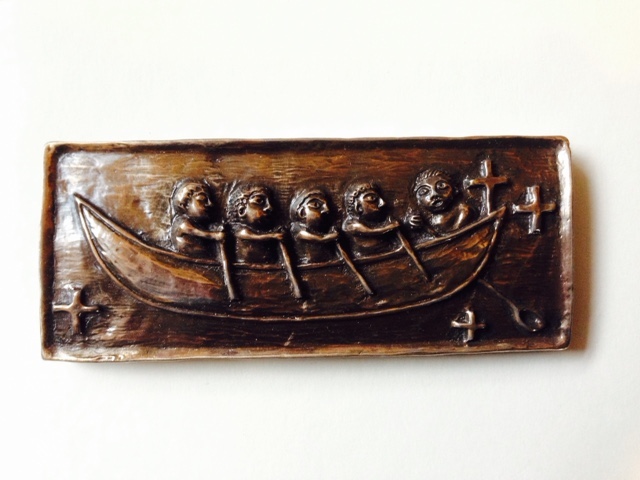



![IMG_7853[1]](https://i0.wp.com/emergentkiwi.org.nz/wp-content/uploads/2019/11/IMG_78531.jpg?resize=640%2C480)







